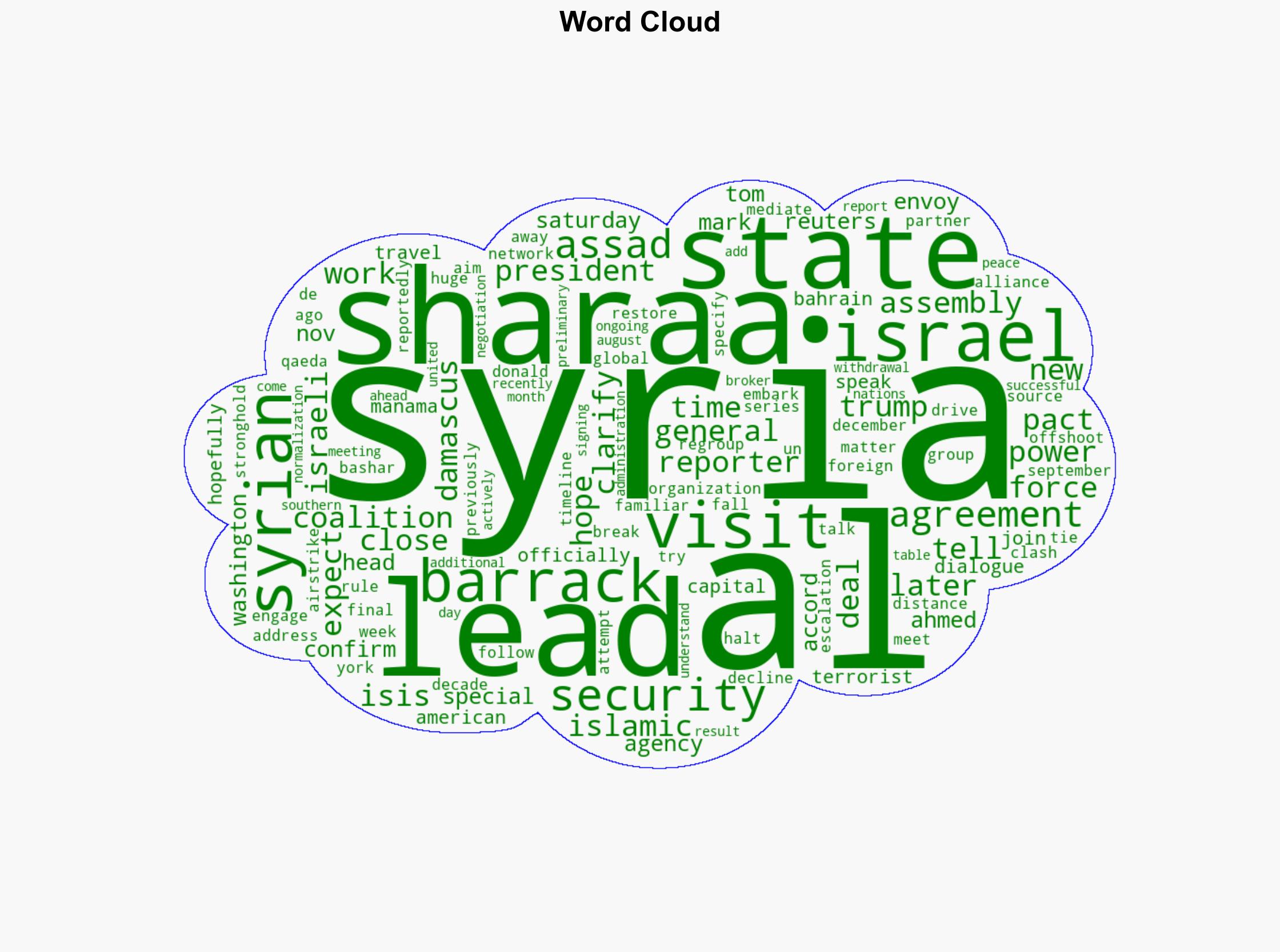Syrian President to visit Washington for first time may join coalition against ISIS – Israelnationalnews.com
Published on: 2025-11-02
Intelligence Report: Syrian President to visit Washington for first time may join coalition against ISIS – Israelnationalnews.com
1. BLUF (Bottom Line Up Front)
The potential visit of Syrian President Ahmed Al Sharaa to Washington and his possible alignment with the U.S.-led coalition against ISIS could signify a strategic shift in Syrian foreign policy. The most supported hypothesis suggests this move aims to distance Syria from the Assad regime’s legacy and improve international relations. Confidence level: Moderate. Recommended action: Monitor diplomatic engagements and prepare for potential shifts in regional alliances.
2. Competing Hypotheses
1. **Hypothesis A**: President Ahmed Al Sharaa’s visit to Washington and potential coalition membership is a genuine attempt to realign Syria with Western powers and distance from Assad’s legacy.
– **Supporting Evidence**: Al Sharaa’s history of breaking away from Assad’s regime, his recent foreign visits, and ongoing negotiations with Israel suggest a strategic pivot.
2. **Hypothesis B**: The visit is a strategic deception to gain concessions from the U.S. and Israel while maintaining Syria’s current alliances.
– **Supporting Evidence**: Lack of a clear timeline for agreements with Israel and potential for negotiations to stall or reverse.
Using ACH 2.0, Hypothesis A is better supported due to consistent actions by Al Sharaa to engage with Western powers and distance from Assad’s policies.
3. Key Assumptions and Red Flags
– **Assumptions**: Al Sharaa has the authority and intent to shift Syrian foreign policy. The U.S. and Israel are willing to engage genuinely with Syria.
– **Red Flags**: Potential internal opposition within Syria, lack of transparency in negotiations, and historical volatility in Middle Eastern alliances.
– **Blind Spots**: The actual influence of other regional powers (e.g., Iran, Russia) on Syria’s decisions is not fully addressed.
4. Implications and Strategic Risks
– **Geopolitical**: A successful realignment could alter power dynamics in the Middle East, potentially isolating Iran and Russia.
– **Security**: Joining the coalition against ISIS may provoke retaliation from remaining ISIS factions or other extremist groups.
– **Economic**: Improved relations with Western powers could lead to economic aid and investment in Syria.
– **Psychological**: A shift in alliances may impact domestic perceptions and stability within Syria.
5. Recommendations and Outlook
- **Monitor diplomatic channels**: Closely observe communications between Syria, the U.S., and Israel for signs of genuine engagement or deception.
- **Prepare for regional shifts**: Develop contingency plans for potential changes in alliances and power structures in the Middle East.
- **Scenario Projections**:
– **Best Case**: Successful integration of Syria into the coalition, leading to regional stability and economic growth.
– **Worst Case**: Breakdown of negotiations, leading to increased tensions and potential conflict escalation.
– **Most Likely**: Gradual improvement in relations with cautious engagement from all parties involved.
6. Key Individuals and Entities
– Ahmed Al Sharaa
– Tom Barrack
– Donald Trump
7. Thematic Tags
national security threats, counter-terrorism, regional focus





